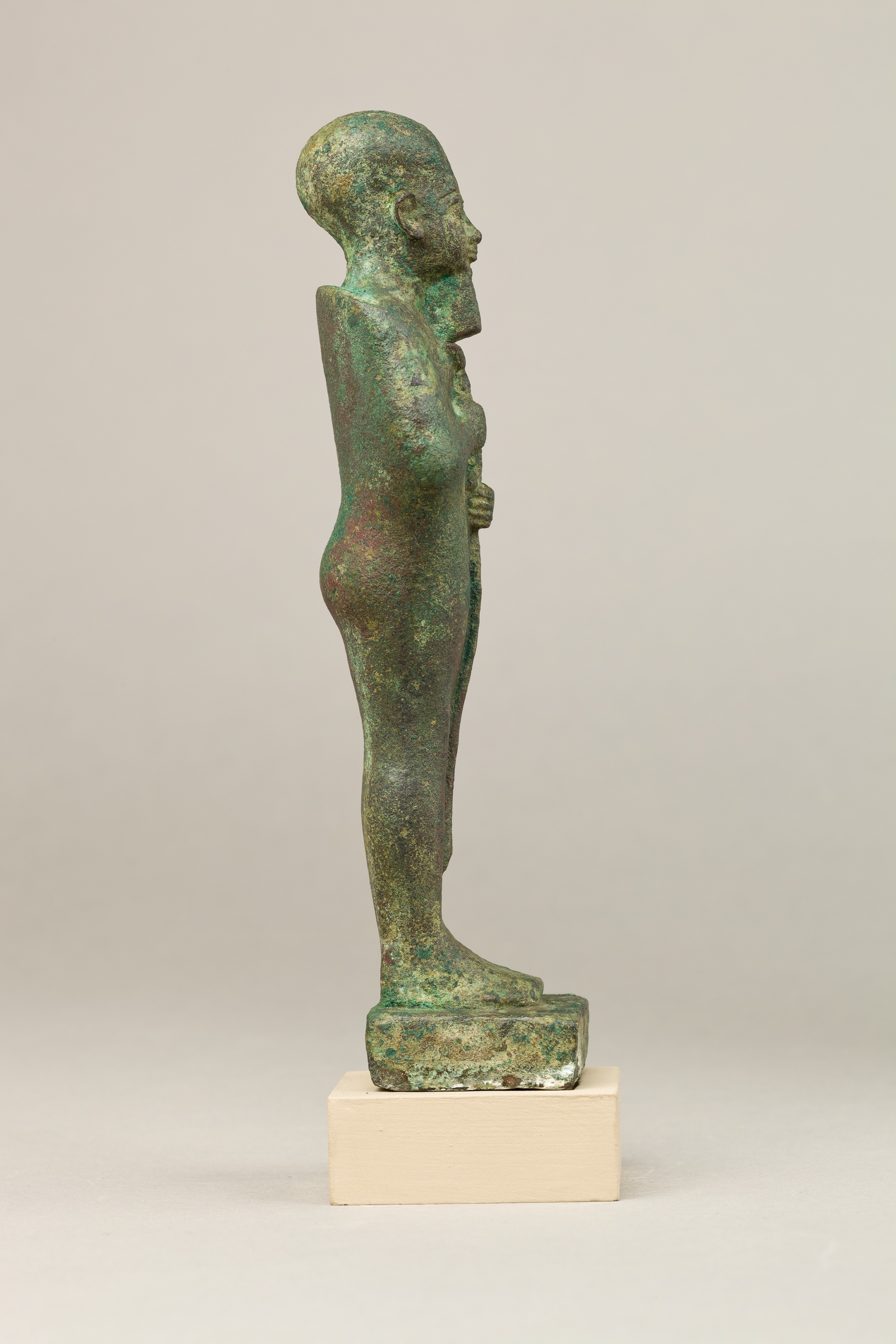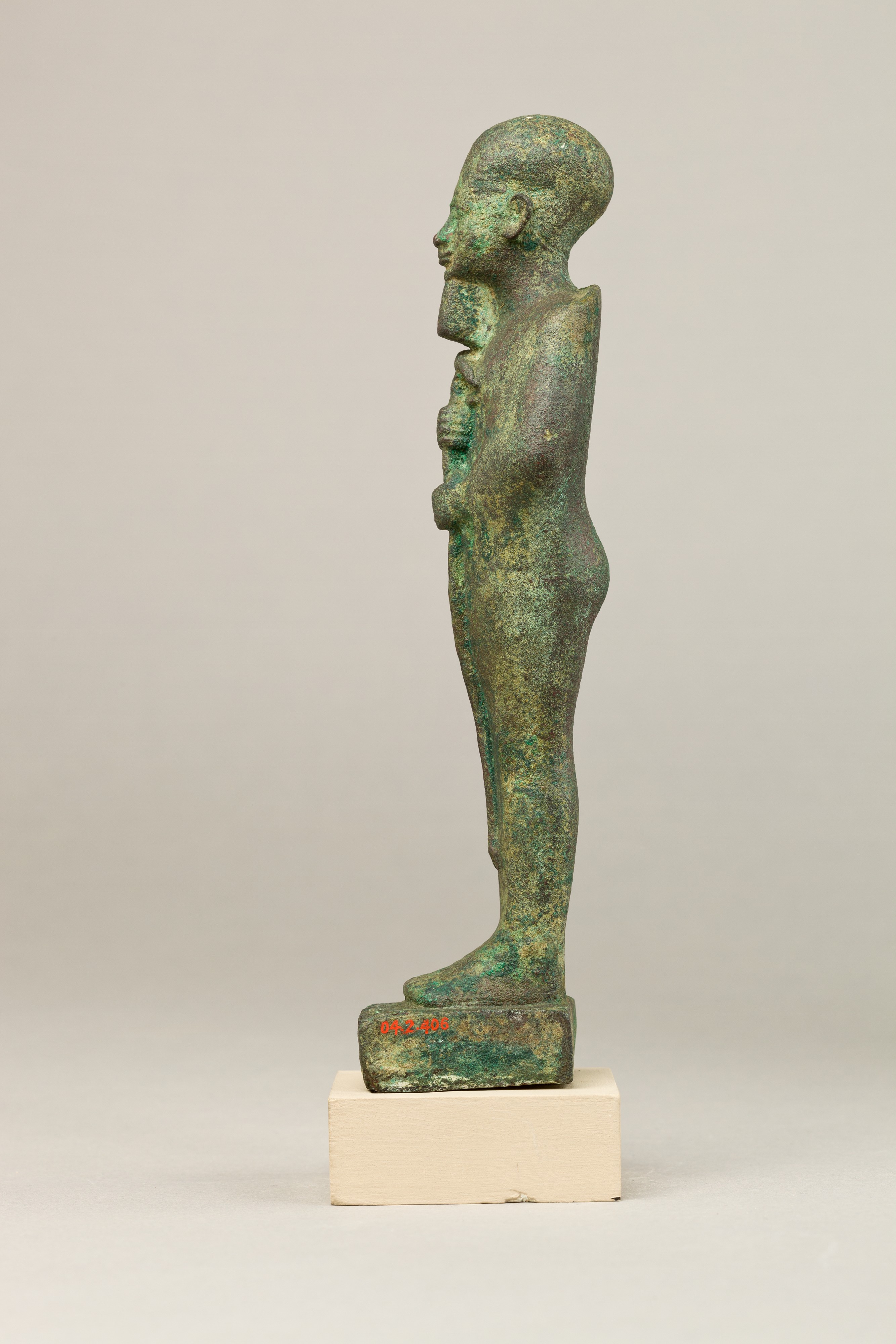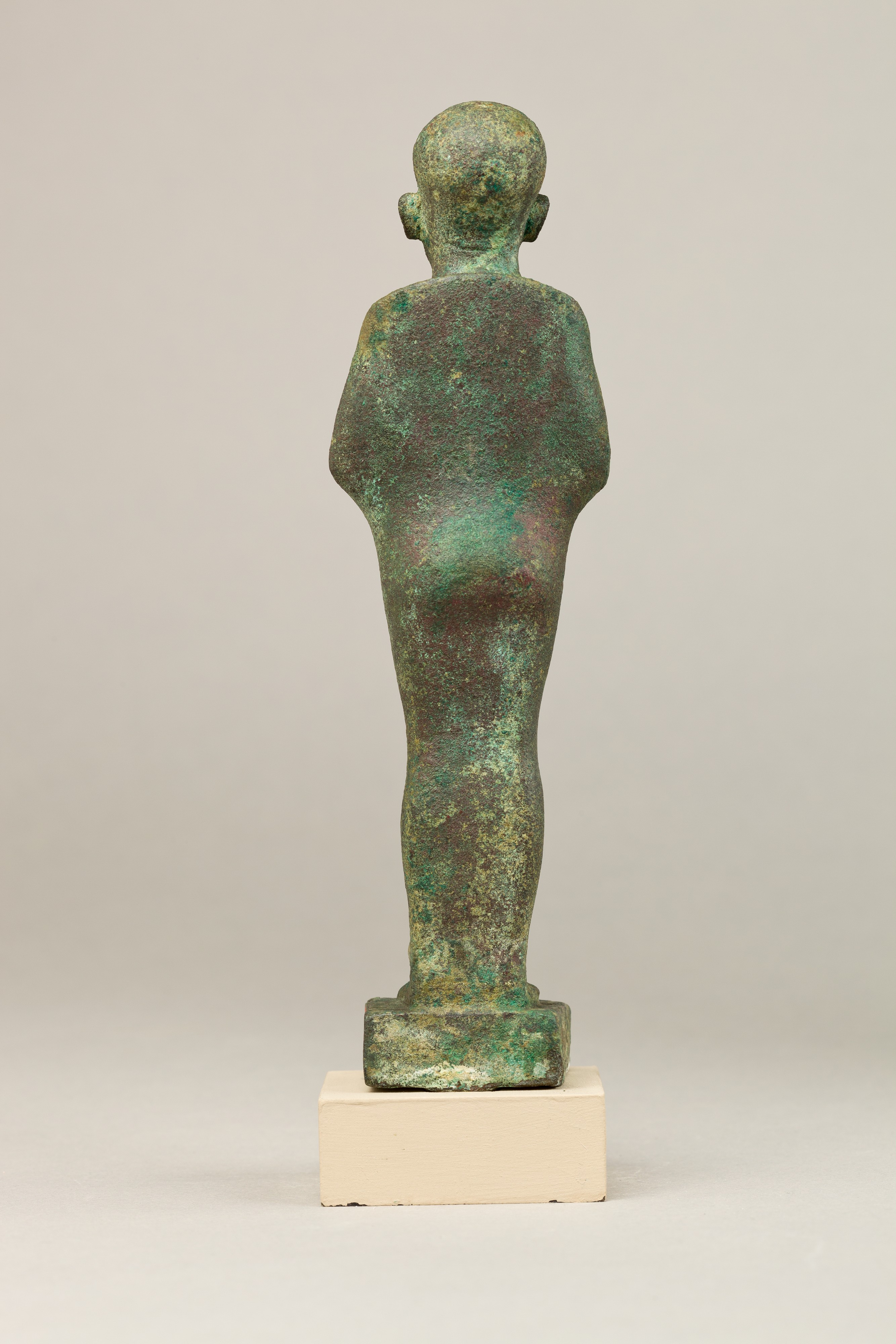Ptah
Late Period–Ptolemaic Period
This statuette depicts Ptah, the chief god of Egypt's capital city Memphis and master craftsman of the gods. He is easy to identify by his tight-fitting cap, straight beard (different from the usual curved divine beard on other gods), and enveloping garment. The garment has a stiff upper edge along the back of the neck, a feature that occurs with some regularity also on Osiris statuettes, but its meaning is unclear. A shallowly carved oval area on his chest brings his hands and scepter into sharper relief, and may be intended to represent slits in the cloak itself. Commonly Ptah holds a scepter that combines the symbols for life (ankh), dominion (was), and stability (djed), but here he holds only the was scepter. Ptah was a benevolent and approachable god, characteristics that may have inspired his devotees to dedicate numerous representations of him in the Late and Ptolemaic Periods.
Due to rights restrictions, this image cannot be enlarged, viewed at full screen, or downloaded.
This artwork is meant to be viewed from right to left. Scroll left to view more.





